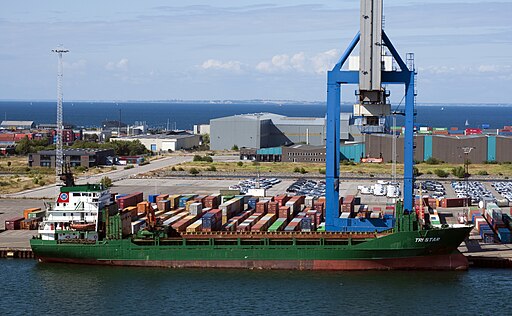 The world of intermodal transportation and freight management is constantly evolving as supply and demand levels change, government regulations are amended, and technology continues to provide more efficient methods of tracking and management. Some changes may be helpful for the industry, while others may be challenging, but one thing is certain – goods still need to be moved from Point A to Point B in the most efficient and cost-effective manner possible. To help in planning shipments for 2019 and beyond, here are four of the top logistics trends we foresee:
The world of intermodal transportation and freight management is constantly evolving as supply and demand levels change, government regulations are amended, and technology continues to provide more efficient methods of tracking and management. Some changes may be helpful for the industry, while others may be challenging, but one thing is certain – goods still need to be moved from Point A to Point B in the most efficient and cost-effective manner possible. To help in planning shipments for 2019 and beyond, here are four of the top logistics trends we foresee:
Global Trade Environment
It is important to be aware of the ramifications of a volatile global trade environment in an economy where manufacturers can benefit from a worldwide marketplace. This affects not only trade in the United States and North America, but also Europe and Great Britain, as well as China and its many trading partners. Tariffs, free trade agreements and sanctions can significantly impact the free flow of goods. Producers may find that existing trade patterns need to be altered, or that prices need to increase dramatically.
Digitalization
According to the PwC CEE Transport and Logistics Trend Book for 2019, digitalization is one of the primary forces that are rapidly transforming transport and logistics. The digital supply chain is not just about Information and communication technologies; it is also about creating entirely new business processes and models across the entire logistics value chain. Data based on IoT (Internet of Things) technology can be used to maximize resources, simplify transportation processes, and reduce the impact of labor and talent shortages.
Blue Collar Labor Shortages
One logistics trend foreseen by Forbes magazine is that blue collar labor shortages will increase the need for automation and artificial intelligence in providing a full spectrum of freight services. Transportation labor is heavily impacted by the increased demand for laborers in the online shopping industry. The article predicted that transportation managers, shippers and logistics service providers will need to work more closely together to share capacity, expand the transportation ecosystem, maximize shipping capacities, and increase capabilities for direct-to-end-user shipments.
Smarter Warehouse Solutions
The Logistics Management 2018 Distribution Center Survey revealed that the best way to combat potential labor shortages, as well as increased labor costs, and more effectively manage storage solutions is through the increased use of smart technologies. This may involve a combination of a Warehouse Management System (WMS), Warehouse Control System (WCS), and a Warehouse Execution System (WES) to make warehouses work smarter and more efficiently than ever before. These systems control such automated in-house solutions as conveyors, pick-by-voice, scales, scanners and warehouse robots to minimize human handling and maximize warehouse efficiency.
See Also:
